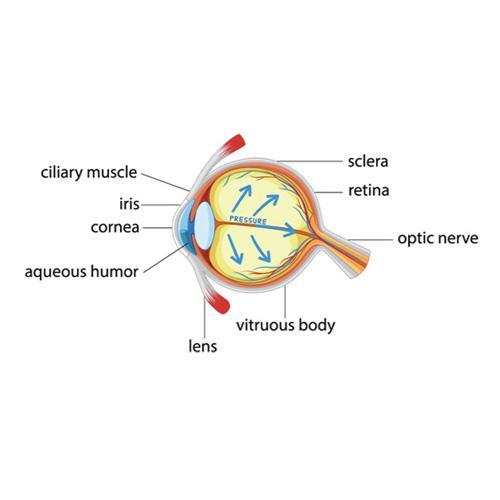Glaucoma Diagnosis & Monitoring
What is Glaucoma?
Glaucoma is the condition when the pressure in the eye causes damage to the main nerve to the eye (the optic nerve) where it leaves the eye. As it becomes damaged, the nerve transmits signals about what is being seen to the brain, and as a result, vision is lost. As a result, one develops misty vision with eventual loss of central vision, although this only occurs in rare cases.

How do we treat Glaucoma?
Glaucoma treatment aims to diagnose the condition early, and with regular drops or surgery (including laser) the vast majority of people remain able to see for the rest of their lives. It is imperative to be checked by your optician regularly to ensure you don’t have glaucoma. Once your vision has been lost to glaucoma, it cannot be recovered.
There are four main types of glaucoma:
- primary open-angle glaucoma
- primary angle closure glaucoma
- secondary glaucoma
- developmental glaucoma
Healthy Eye

Eye with Glaucoma

Frequently Asked Questions
Glaucoma is a condition that occurs when increased pressure inside the eye damages the optic nerve, which is responsible for transmitting visual information to the brain. As the optic nerve becomes progressively damaged, it can lead to a gradual loss of vision. In the early stages, vision loss may not be noticeable, but over time, it can cause misty or blurred vision and, in severe cases, a loss of central vision. Early detection and treatment are essential to slow or prevent further vision loss. Requires a GP orOptician referral.
